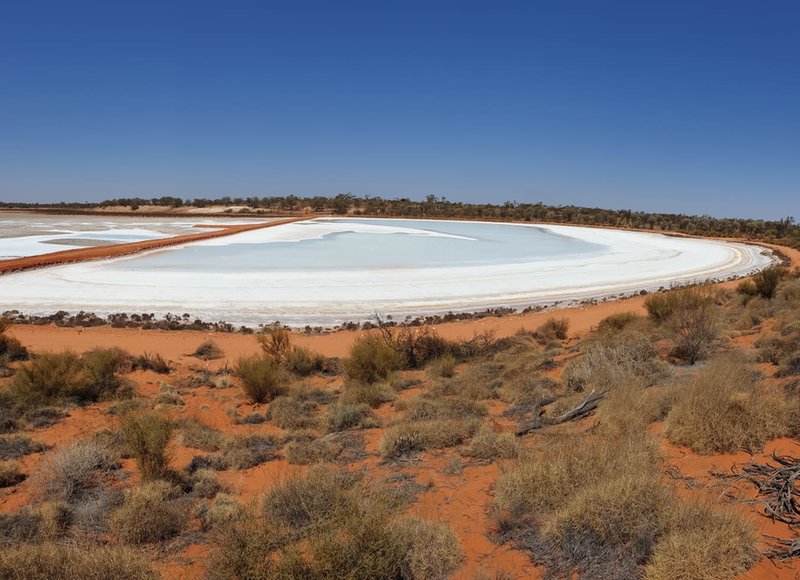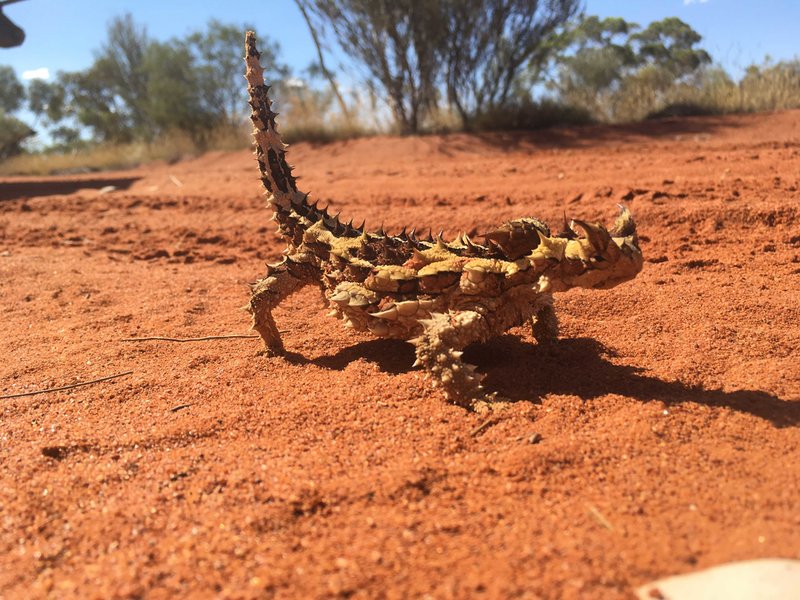q&A | PROJECT INSIGHT
An inside look at Australian Potash’s Lake Wells fertiliser mine
Australian Potash’s A$665m Lake Wells sulphate of potash project in Western Australia is said to be the largest resource of its kind in the country. As the mine edges closer to production, with the environmental regulator set to make a final decision by September, Heidi Vella talks to company CEO and managing director Matt Shackleton to find out more.


The Lake Wells Potash Project, located 500km northeast of Kalgoorlie in Western Australia nearly didn’t exist. It was meant to be a gold-only endeavour until, in 2014, an estimated 18.1 million tonnes of sulphate of potash (SOP) was stumbled upon, somewhat by accident.
Now the project is anticipated to be a stellar fertiliser resource, with an estimated 30-year life and net present value of A$665m, plus three off-take agreements already announced. Regulatory approvals permitting, the potash will be exploited alongside the gold, which will be conducted by St Barbara Ltd. Drilling is expected to commence in September until the end of 2021.
Heidi Vella: How did the Lake Wells Potash Project come about?
Matt Shackleton:
I joined the company in July 2014, which was, serendipitously, the same month we discovered the salt water at Lake Wells was very rich in potassium. And perhaps more importantly, was rich in sulphates, which enables us to make potassium sulphate, the premium form of potash, which is 99.9% used as a fertiliser.
The discovery was made by chance by one of our geologists. He was out at Lake Wells, which is slap-bang in the middle of Western Australia and therefore a long way from anywhere, when he spotted a man. Because it’s so remote, generally speaking, you don’t expect to run into strangers. So, our geo questioned the bloke.
The guy said he’d been living and working in China for 15 years at a company that made potash out of a lake and he felt this lake could also be rich in potassium. The geo told the guy ‘that’s interesting, but you’re on our ground, not yours’ and as soon as he had sent him packing, he took a Coke bottle out of the car and brought a sample back for testing. Sure enough, it shot the lights out with potassium. So pure dumb luck led us to find this.
More than half of the country’s coal mines are managed by pro-Russian separatist militia.Credit: DmyTo/Shutterstock.
Tell us more about the project and the progress you’re making.
It's a solar salt project. So, as the name suggests, it relies on the sun and the wind to do most of the refining of the ores of the brine. What happens is, the brine comes out of the ground, it's very hot, it’s oily, and it has a total dissolved salt content of about 280,000 to 320,000 parts per million. So, if you think of the Dead Sea, this stuff is almost twice as dense as that.
Right now, we're headlong into development. The environmental approvals process is underway and we meet with the Environmental Protection Agency this Thursday, which will be the final step in their assessment of our proposal. We've been working hard on the offtake agreements and have secured our third.
We have been advised we need about 75% of our output to make the project financeable. We have one more to go to achieve that and we imagine we will announce another sometime next week. That will wrap up the offtake programme. Then we've got the financing programme. We’ve been in discussions with debt financers in Australia, principally with the Northern Australian Infrastructure Facility, which is a federal government run investment fund.

Has Covid-19 caused any delays and will it change anything going forward?
No, not really. We did have to de-mobilise some guys from the field, but that hasn't delayed us because most of our work is currently on the commercial side, such as the offtake agreements and the EPA approvals process, which, generally speaking, is done by people like me in an office. I don't think we're going to be allowed to travel anytime soon but we've all learned to do video conferencing quite well.
The next real challenge for us, of course, is when we go through the financing process because in a lot of ways it's still better to be face-to-face with people, especially for that introductory meeting. Do we think it's going to delay us? No, we don't. Has it got the potential to? Yes.
Operationally, we don't envisage using an interstate fly-in fly-out workforce. We only need a small crew. By the time we're in operation, which is over two years away, I imagine things will have improved with Covid-19.
Other potash mines, such as Sirius Minerals’ UK project, have struggled to raise funds, citing market conditions; why is your potash project different, do you think?
Sirius was wanting to produce a polyhalite, which Sirius refers to as a potash but it has a potassium oxide concentration, the uniform measure for potash, of about 15%. Whereas ours has an oxide equivalent of about 52%. Most farmers want to know what they are putting on the ground and don’t want lots of bulk fillers that you would get with their level of oxide concentration. And the market for polyhalite hadn’t been proven, it was a new product and no one had seen the efficacy for this in an actual real-life situation.
You’ve said the Lake Wells mine has a low carbon footprint, one of the lowest; how so?
Ours is a solar salt project with the sun and the wind doing most of the work and is comparable, cost wise, with a chemically driven process for producing sulphate potash.
Another process, called the Manheim process, which involves firing up a chemical reaction at 450°C, is expensive to run and produces hydrochloric acid.
We produce SOP for about $250 a ton or less and it is a purely organic process. We don't introduce any deleterious elements and we don't leave anything behind. Our SOP will be organically certified. We’ve also got a 10MW, 100% renewable power station that combines wind and solar power generation and has battery storage capacity to, on average, produce 60-65% of our power requirements. When up and running, I think we'll be the first renewable power potash project in the world.

There has been a native title claim on the mine site, how are you engaging with local indigenous communities?
In an order of time, our project came before the Native Title claim. Therefore, without wishing to sound crude, they can't trump us. We don't spend a lot of time working around the Native Title as we don’t have to.
What we spend time on in the indigenous engagement strategy is understanding the cultural significance of the area, of which there is a lot. We spend time getting to know the people that speak for the country out there, really understanding them. They're very old, and they live in very remote communities that don't speak English. It’s quite difficult, but it's an absolute travesty if you damage a place of cultural significance.
We won't be doing any drill lines or putting any bores in or clearing any ground unless we're doing it in-conjunction with the indigenous experts. We pay them to advise us how and where, in their understanding of the world, we can develop the project. When we're operating, we will also rely on them to continue to inform not only our workforce about what's important but about how to behave and the things you can and can't do.
Potash projects are new for the Western Australian mining market, has that made the project more challenging?
It’s a new commodity and I think it's probably fair to say there would be more and better understanding of potash projects in the UK investment market than in Australia. It's a brand-new thing for Australia to look at potash projects. It really is. So, one of the real challenges has been simply that critical level of knowledge and understanding around the commodity. Therefore, we are very methodical about what we're doing. Unfortunately, a couple of other players were going very, very quickly and made a couple of mistakes. We are just looking to keep the equity markets with us.
What other challenges do you expect to face going forward?
As I said, we just need the equity markets to stay with us. We've got a great story, a very good resource, and all successful mining projects start on the strength of the resource. That’s a golden rule that has never, ever been broken.
Arguably, we've got the strongest resource in Australia, we've got 60,000m of drilling behind us and over 700km of seismic surveys. Our challenge isn’t a technical one, we know this project can produce, it’s really about keeping the markets interested. The feed the world argument is easy to make and this is a project that can make that argument. We've just got to make people continue to see that.
“Queensland’s resources sector provides one in every five dollars in the Queensland economy, sustains one in eight Queensland jobs, and supports more than 15,400 businesses and community organisations.”

AusProof is celebrating 25 years of business in Australia in 2019.
